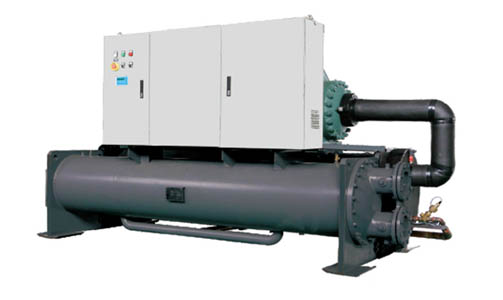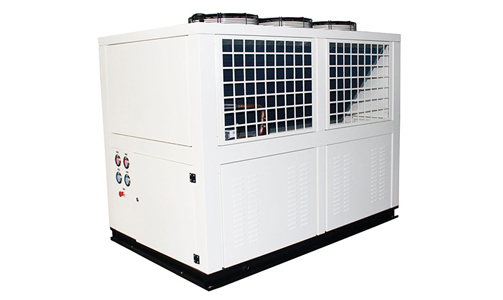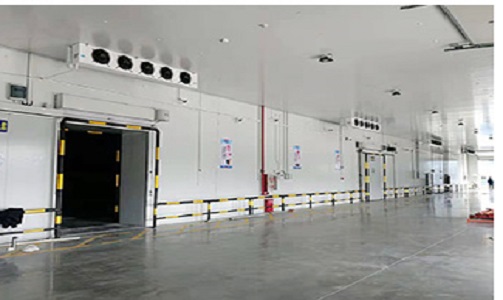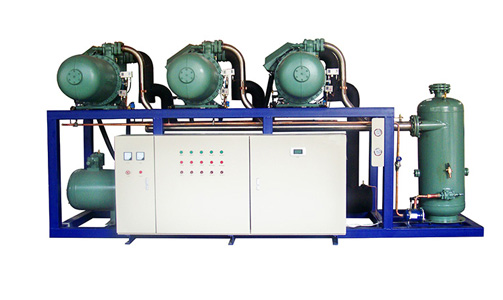Chilled water systems are cooling systems that circulate chilled water throughout a building for cooling and dehumidifying a building’s air. They come in all shapes, sizes, and configurations. Chilled water systems are closed-loop systems, meaning that the system water is continually recirculated and not exposed to atmospheric pressure, similar to domestic water systems. While selecting the type of chiller to use is generally dictated by capacity, there are still many philosophies on the best way to control, operate, and calculate system operational costs.
The first step in chiller selection is understanding the options available. A building’s block load will determine the overall capacity, whereas part load will determine the number and quantity of chillers required, with multiple chillers providing the ability to stage chillers in response to load. A block load will take into account building diversity and load changes based on exposure, internal and external loads, and building schedules because all portions of the building will not be peaking simultaneously. The function of space may also dictate sizing and plant reliability. Essential services, such as data centers or hospitals, require reliability and redundancy with the use of a backup chiller or chillers for N+1 or 2N redundancy based on an owner’s requirements. Furthermore, the hourly building profile run time may require equal or unequally sized chillers.

Water-Cooled Falling-film Screw Chiller
Chiller compressors
The first category of chillers is defined by the method used to compress the refrigerant. Positive displacement compressors operate with two mechanical devices, such as scroll- or screw-shaped rotors. These devices trap refrigerant vapor and compress it by gradually reducing the volume to increase the pressure.
Most small chilled water plants—up to approximately 200 tons in capacity—use scroll compressors for the production of chilled water. Scroll chillers start as low as 20 tons and increase in size to approximately 200 tons.
Once the capacity exceeds the size of multiple scroll compressors, typically four to six 30-ton scroll compressors, chillers use screw compressors. Screw compressors are available in sizes up to about 500 tons. Screw compressors have the ability to vary the cooling output capacity from 100% to 20% via the use of a sliding vane to limit refrigerant delivery to the compressor and provide a smooth, modulating transition between capacities.

Box Type Air-Cooled Chiller
The third and final type of compressor, a centrifugal compressor, operates on a different compressor philosophy that relies on dynamic compression to compress and raise the refrigerant pressure. A rotating impeller is used to accelerate the refrigerant and allow the conversion of velocity energy into pressure energy. Centrifugal chillers start at approximately 200 tons and go up to thousands of tons depending on the number of compressors.
Centrifugal compressors are typically used for compressing large volumes of refrigerant to relatively low pressures and can be configured specifically to the application by changing the number of stages, compressor speed and size, impeller diameter, refrigerant type, and condenser and evaporator shell sizes. Capacity control of centrifugal chillers is accomplished through inlet vanes at the inlet of the compressor that varies the refrigerant flow in stages in response to the building load.
A variable frequency drive (VFD) also could be used for capacity control to vary the speed of the impeller rotation in conjunction with inlet vanes. Inlet vanes and VFDs accomplish different objectives: inlet vanes are used for buildings that may have a large load variation, while VFDs should be used for buildings that have large variations in the lift, which equates to changes in condenser relief. VFDs are not always an appropriate option for chillers and their use greatly depends on their ability to various temperatures. Regardless, close attention should be paid to low load conditions near 20% capacity, in which the efficiency degrades rapidly and causes the chiller to operate in a condition known as surging.
If you want to get more information about the type of chillers, welcome to contact us today or request a quote.








